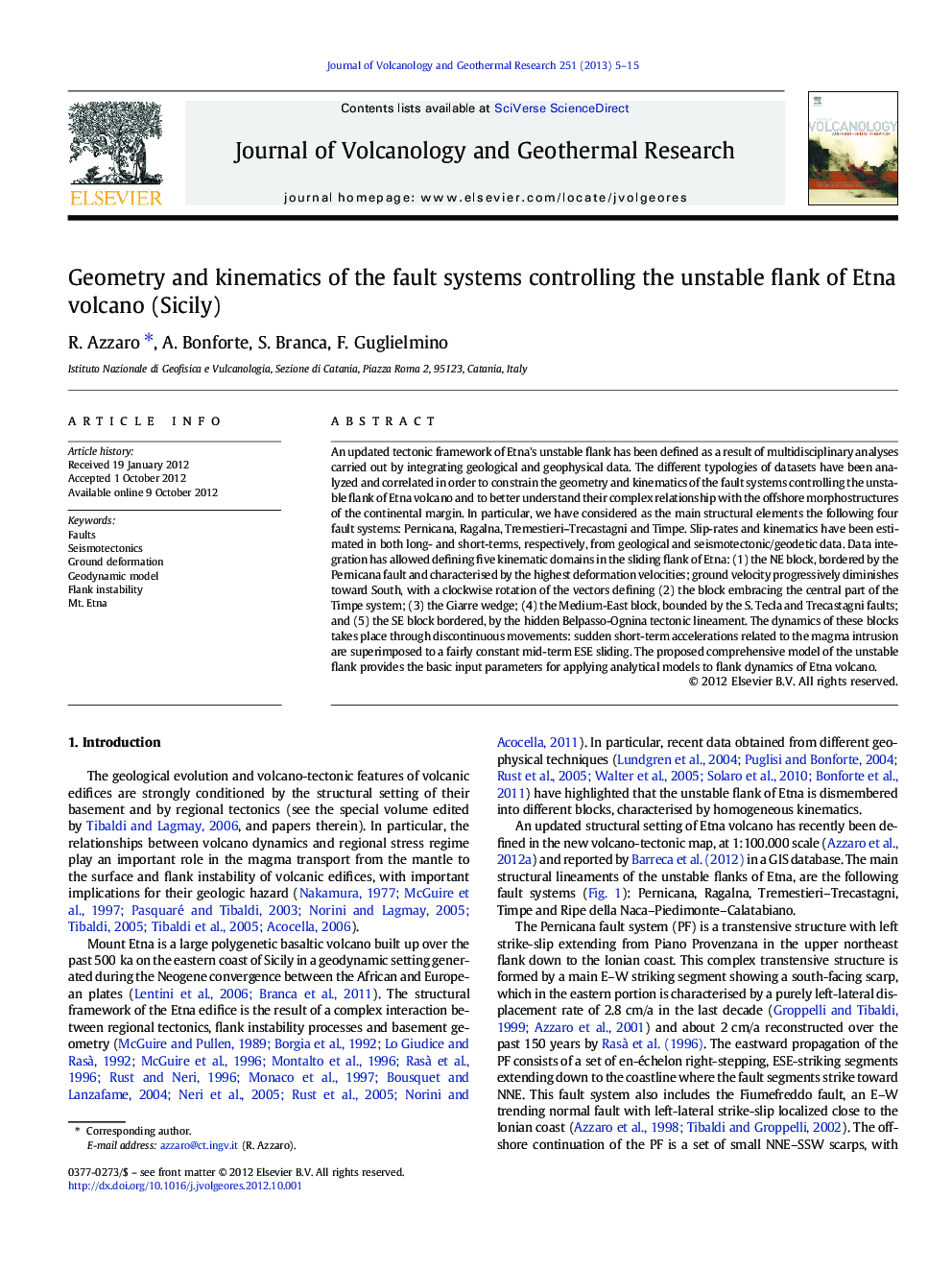| Article ID | Journal | Published Year | Pages | File Type |
|---|---|---|---|---|
| 4713195 | Journal of Volcanology and Geothermal Research | 2013 | 11 Pages |
An updated tectonic framework of Etna's unstable flank has been defined as a result of multidisciplinary analyses carried out by integrating geological and geophysical data. The different typologies of datasets have been analyzed and correlated in order to constrain the geometry and kinematics of the fault systems controlling the unstable flank of Etna volcano and to better understand their complex relationship with the offshore morphostructures of the continental margin. In particular, we have considered as the main structural elements the following four fault systems: Pernicana, Ragalna, Tremestieri–Trecastagni and Timpe. Slip-rates and kinematics have been estimated in both long- and short-terms, respectively, from geological and seismotectonic/geodetic data. Data integration has allowed defining five kinematic domains in the sliding flank of Etna: (1) the NE block, bordered by the Pernicana fault and characterised by the highest deformation velocities; ground velocity progressively diminishes toward South, with a clockwise rotation of the vectors defining (2) the block embracing the central part of the Timpe system; (3) the Giarre wedge; (4) the Medium-East block, bounded by the S. Tecla and Trecastagni faults; and (5) the SE block bordered, by the hidden Belpasso-Ognina tectonic lineament. The dynamics of these blocks takes place through discontinuous movements: sudden short-term accelerations related to the magma intrusion are superimposed to a fairly constant mid-term ESE sliding. The proposed comprehensive model of the unstable flank provides the basic input parameters for applying analytical models to flank dynamics of Etna volcano.
► Kinematic model of Etna integrates on- and offshore data. ► Fault kinematics are obtained by seismotectonic and ground deformation data. ► Kinematic domains are defined by shallow listric faults connecting with a sole fault. ► Long-term slip-rates are indicative of the geological processes of flank instability. ► High short-term slip-rates are due to magma intrusions.
